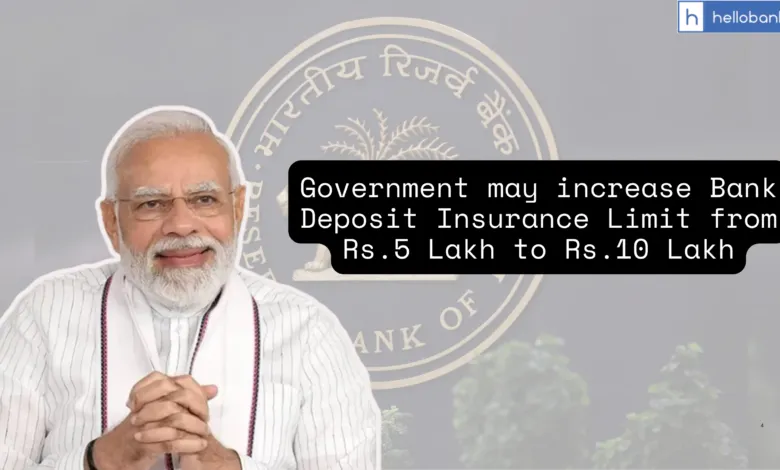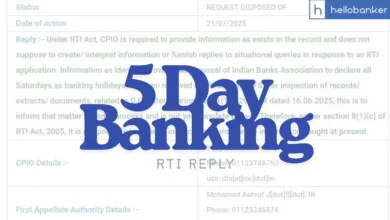Depositing Money in Banks will be Safer! Government may increase Bank Deposit Insurance Limit from Rs.5 Lakh to Rs.10 Lakh

| ➡️ Get instant news updates on Whatsapp. Click here to join our Whatsapp Group. |
The Government of India is planning to increase limit for Deposit Insurance in Banks. The Government of India is planning to increase the limit of bank deposit insurance above Rs.5 Lakhs.
Right now, if a bank fails, then the bank customer gets Rs.5 Lakhs from DICGC. DICGC, or the Deposit Insurance and Credit Guarantee Corporation, is a wholly-owned subsidiary of the Reserve Bank of India (RBI). It’s responsible for insuring deposits in commercial banks and guaranteeing credit facilities.
Deposit insurance is a safety cover for bank customers. If a bank shuts down or goes bankrupt, depositors get back their money up to a certain limit. Currently, under the Deposit Insurance and Credit Guarantee Corporation Act (DICGC), each depositor is insured up to ₹5 lakh. This means if your bank fails, you can get up to ₹5 lakh of your deposited money within 90 days.
This means that if you have deposited Rs.50 lakhs in bank and if bank fails then you will get just Rs.5 Lakhs. This has become a problem and people all across India have requested government to increase this limit.
Recently, IndusInd Bank is going through a lot of turmoil. Earlier, YES Bank failed and right now, RBI has cancelled licenses of a lot of Cooperative Banks. In view of the current situation, it has become important to raise the limit of DICGC.
How much will the limit be increased?
As per the sources, the Indian government is planning to increase the deposit insurance cover on bank savings from ₹5 lakh to ₹10 lakh. This change might take place within the next six months, though a final decision has not yet been made. A senior official from the Finance Ministry shared that discussions are ongoing. Several important factors are being considered before fixing the new limit. These include:
- How many depositors will benefit
- How much money will be covered under the new insurance
- How much financial guarantee the government will provide
Once these points are finalized, the Union Cabinet will take the final call, and the Finance Ministry will make an official announcement.
How Does It Work if a Bank Fails?
If a bank goes bankrupt or is placed under a moratorium, this is how your money is protected:
- The bank collects all account holder details and submits them to DICGC within 45 days.
- DICGC reviews the information and releases the insurance amount within another 45 days.
- The bank then credits the insured amount to your account.
Earlier, the insurance limit was only Rs. 1 Lac. DICGC increased the deposit insurance coverage limit from ₹1 lakh to ₹5 lakh per depositor per bank from 4th February 2020. In 1962, the DICGC insurance limit was only Rs.1500. Check below table to know the DICGC Limit changes.
| Year | DICGC Amount |
|---|---|
| Jan 1 1962 | 1500 |
| Jan 1 1968 | 5000 |
| Apr 1 1970 | 10000 |
| Jan 1 1976 | 20000 |
| Jul 1 1980 | 30000 |
| May 1 1993 | 100000 |
| Feb 4 2020 | 500000 |
DICGC Insurance Limit is beneficial for customers, but it’s costly for banks. Banks need to pay a premium to provide insurance. For example: In order to provide Rs.5 Lakh DICGC insurance to customers, banks need to pay a premium of Rs.0.12. Due to this increase in premium amount, Banks may not want to increase the DICGC amount as it may impact the financials and profit of the Bank. You can check the premium amount in the table below.
| Year | Amount |
|---|---|
| Jan 1 1962 | 0.05 |
| Oct 1 1971 | 0.04 |
| Jul 1 1993 | 0.05 |
| Apr 1 2004 | 0.08 |
| Apr 1 2005 | 0.10 |
| Apr 1 2020 | 0.12 |
